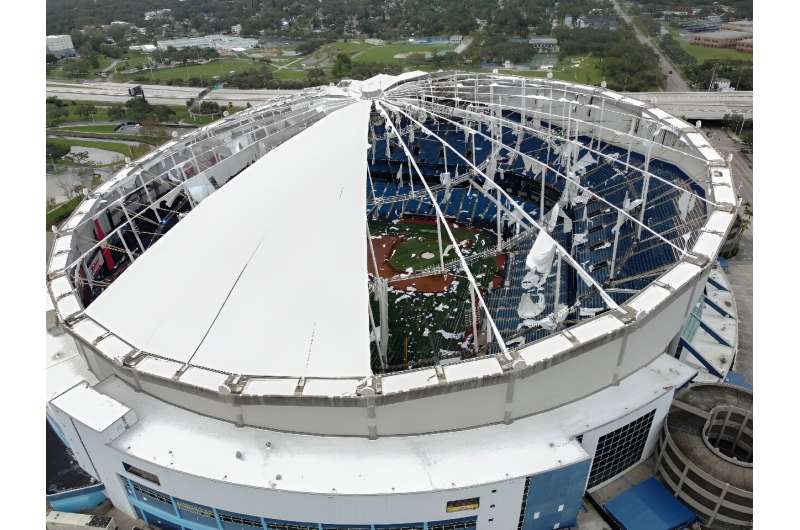In a harrowing display of nature’s raw power, Hurricane Milton recently carved a path of destruction through Florida, leaving the iconic Tropicana Field baseball stadium in ruins. The storm’s hurricane-force winds tore open the roof of the stadium, exposing the interior to the elements and scattering debris across the field. This catastrophic event serves as a stark reminder of the immense challenges communities face in the wake of increasingly intense hurricanes driven by climate change.

The Fury of Hurricane Milton
On a fateful night in Florida, Hurricane Milton made landfall as a powerful Category 3 storm, unleashing a relentless onslaught of hurricane-force winds and torrential rain. As the storm barreled through the state, it left a trail of devastation in its wake, including the catastrophic destruction of the Tropicana Field stadium in St. Petersburg.
Eyewitness accounts and video footage captured the harrowing moment when the stadium’s roof was shredded by Milton’s fierce winds. Pieces of the fiberglass roofing were ripped apart, leaving the metal rafters and the field exposed to the elements. The once-covered stadium was now a gaping, vulnerable structure, a stark symbol of the storm’s unbridled power.
Preparing for the Worst: Tropicana Field’s Failed Shelter Plan
In anticipation of Hurricane Milton’s arrival, local authorities had initially prepared Tropicana Field as a 10,000-person staging ground for first responders, outfitting the stadium with cots and other emergency supplies. However, as the storm’s intensity became clear, the decision was made to relocate the staging area, a move that ultimately could not prevent the stadium’s roof from being destroyed.
The failure of the shelter plan at Tropicana Field highlights the immense challenges that communities face in the face of increasingly powerful hurricanes. As climate change continues to fuel the intensity and frequency of these extreme weather events, the need for robust disaster preparedness and resilient infrastructure has never been more pressing. The destruction of this iconic sports venue serves as a sobering reminder of the urgent work that lies ahead in safeguarding our communities against the growing threats posed by a changing climate.
The Long Road to Recovery: Rebuilding Tropicana Field and Strengthening Community Resilience
The aftermath of Hurricane Milton’s assault on Tropicana Field has left the community reeling, but the path forward is clear: rebuild, adapt, and strengthen resilience. Local authorities and the Tampa Bay Rays organization have already begun the daunting task of assessing the damage and planning for the stadium’s reconstruction.
As this process unfolds, it will be crucial to incorporate lessons learned and incorporate the latest advancements in sustainable architecture and disaster resilience to ensure that the new Tropicana Field is better equipped to withstand the growing threats posed by climate change. By investing in robust infrastructure and empowering communities to prepare for and adapt to extreme weather events, we can build a more resilient future and protect the places and cherished institutions that are the heart of our communities.
